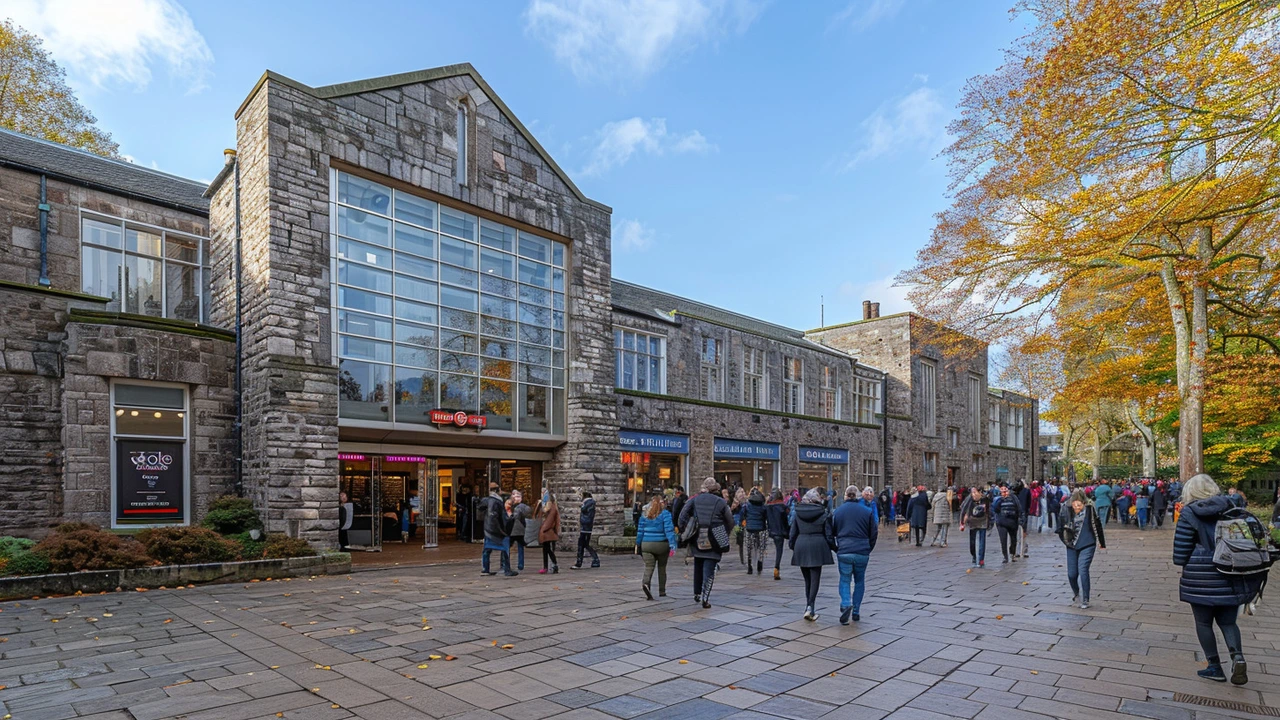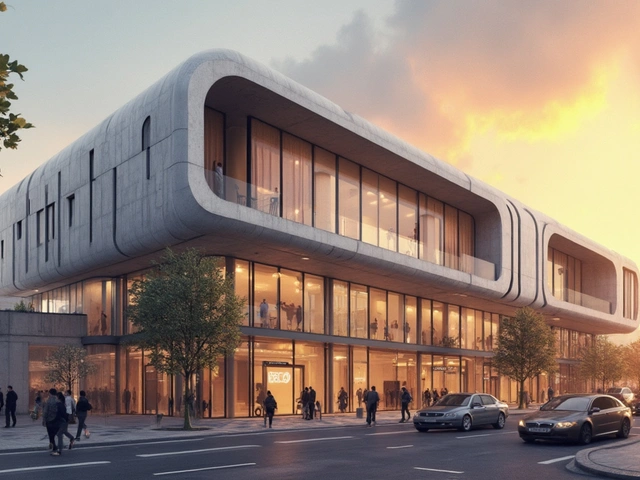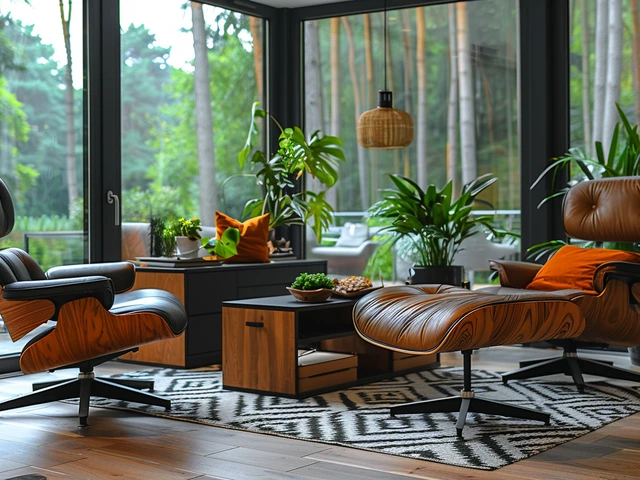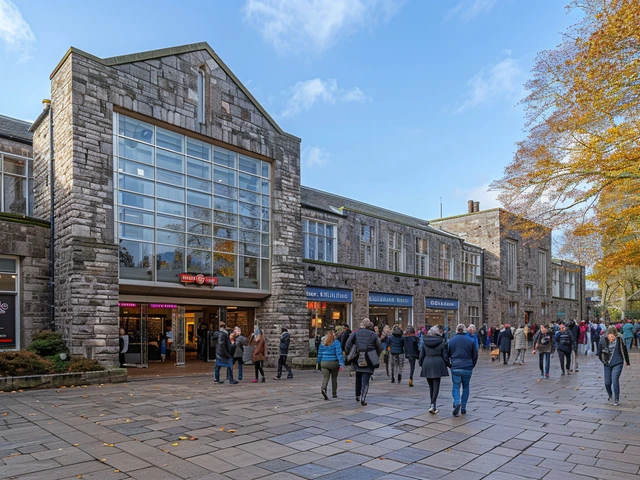Mid-Century Modern design, primarily flourishing from the 1940s to the 1960s, significantly transformed how we perceive urban landscapes. This architectural style, marked by simplicity, functionality, and a connection to nature, reshaped city planning across the globe.
Its historical roots trace back to notable architects like Frank Lloyd Wright and Le Corbusier, who championed open spaces, clean lines, and large windows. These elements aimed to enhance the living experience by bringing the outdoors inside, creating a seamless flow between interiors and the environment.
But why did this style have such an impact on urban planning? Its adaptability played a crucial part. Mid-Century Modern principles were applied not just in residential buildings but also in commercial and public structures, creating cohesive cityscapes.
Several iconic cities, like Palm Springs, California, present a perfect blend of this design ethos with urban functionality. Studying these cities provides valuable lessons on incorporating these timeless principles into contemporary urban settings.
- Historical Roots of Mid-Century Modern Design
- Key Characteristics and Elements
- Influence on Urban Planning
- Case Studies of Iconic Cities
- Incorporating Mid-Century Modern in Today's Urban Design
Historical Roots of Mid-Century Modern Design
The historical roots of Mid-Century Modern design are deeply entwined with the socio-economic changes following World War II. As the world emerged from the war, rapid advancements in technology and shifts in societal norms spurred a wave of optimism and innovation. This spirit of change was vividly reflected in the architecture and design trends of the time.
This movement found its early proponents in the works of pioneers like Frank Lloyd Wright, whose emphasis on organic architecture laid the groundwork. Wright's philosophy revolved around creating structures that were in harmony with humanity and its environment, mirroring the simplicity and functionality that would come to define Mid-Century Modern.
Across the Atlantic, architects like Le Corbusier were instrumental in shaping these ideas. Le Corbusier's principles of modernist architecture prioritized open spaces and functionality. His famed dictum, "A house is a machine for living in," underscored the emphasis on efficiency and minimalism.
The Bauhaus School in Germany also played a critical role in this movement. Founded by Walter Gropius, Bauhaus combined crafts and fine arts, emphasizing utility and simplicity. This institution became a melting pot for ideas that pushed the boundaries of traditional design, influencing architects and designers globally.
The Bauhaus school's vision was clear: "Beauty rests upon necessity." These words captured the essence of a design ethos that sought to strip away the superfluous, leaving only what is essential.
As the United States experienced a post-war economic boom, suburban expansion became a hallmark of the era. Mid-Century Modern design was perfectly suited to this new lifestyle, catering to the needs of a burgeoning middle class with its affordable, mass-produced, and elegant designs. This era also saw the rise of well-known furniture designers like Charles and Ray Eames, whose innovative creations became icons of the movement.
Materials played a crucial role as well. The widespread availability of new materials like plywood, fiberglass, and steel allowed for inventive and cost-effective designs. These materials enabled architects to create expansive windows, open floor plans, and integrated indoor-outdoor spaces, which have become defining traits of Mid-Century Modern architecture.
Urban centers also embraced these trends. In cities like New York and Los Angeles, the skyline began to reflect the clean lines and open spaces of Mid-Century Modern principles. The shift away from ornate architectural styles of the past towards something more streamlined and purposeful marked a significant transformation in urban landscapes.
In brief, the historical roots of Mid-Century Modern design highlight a period of profound change. The movement emerged as a response to new societal needs and technological advances, championing simplicity, functionality, and a close connection to nature. Today, its influence remains evident in many aspects of contemporary design and urban planning.
Key Characteristics and Elements
Mid-Century Modern design is distinguished by a few hallmark features that set it apart from other architectural styles. One of the most notable characteristics is its **emphasis on simplicity**. This design philosophy shuns unnecessary ornamentation, instead favoring clean lines and geometric forms. This simplicity extends to both the exterior and interior spaces, creating a sense of seamless integration that is pleasing to the eye and functional for living.
Another defining element is the **use of large windows and open floor plans**. This helps to bring natural light into the building, reducing the need for artificial lighting during the day. The open floor plans also promote a sense of spaciousness within homes and public spaces. Architects like Frank Lloyd Wright were pioneers in this concept, often blurring the lines between indoors and outdoors to create a harmonious living experience.
Materials play a significant role in achieving the desired aesthetic. **Natural materials** such as wood, stone, and glass are frequently used. These materials not only offer durability but also help in connecting the structure to its surrounding environment. For example, exposed wooden beams and stone walls are common features in Mid-Century Modern homes, adding texture and an organic feel to the design.
Color schemes in Mid-Century Modern architecture are often subdued. **Neutral colors** like whites, grays, and earth tones form the base palette, allowing the natural beauty of the materials to stand out. Splashes of bold colors, like vibrant oranges or teals, are sometimes added for contrast and visual interest.
The integration of **innovative technologies** and materials of the time also defines this design style. New manufacturing techniques and materials like plywood, plastics, and metals were utilized to create furniture and buildings that were not only stylish but also mass-producible. This ushered in an era of designs that were accessible to the average consumer, democratizing good taste.
According to the Design Museum, "The most distinctive features of mid-century modern architecture are its emphasis on function and its streamlined materials."
Additionally, the role of nature in Mid-Century Modern design cannot be overstated. Landscaping and **outdoor spaces** are viewed as extensions of the indoor area. Designers aimed to make the most of their natural settings, whether by incorporating water features, patios, or expansive lawns, to enhance the living experience.
To appreciate these characteristics fully, one must also understand how Mid-Century Modern design champions **sustainability**. The use of local materials, reduced waste through the simplicity of design, and the integration of natural elements all contribute to making this architectural style environmentally friendly.
| Key Characteristics | Description |
|---|---|
| Simplicity | Clean lines, minimal ornamentation |
| Large Windows | Emphasis on natural light |
| Natural Materials | Wood, stone, glass |
| Neutral Colors | Whites, grays, earth tones |
| Nature Integration | Outdoor spaces that blend with indoor areas |
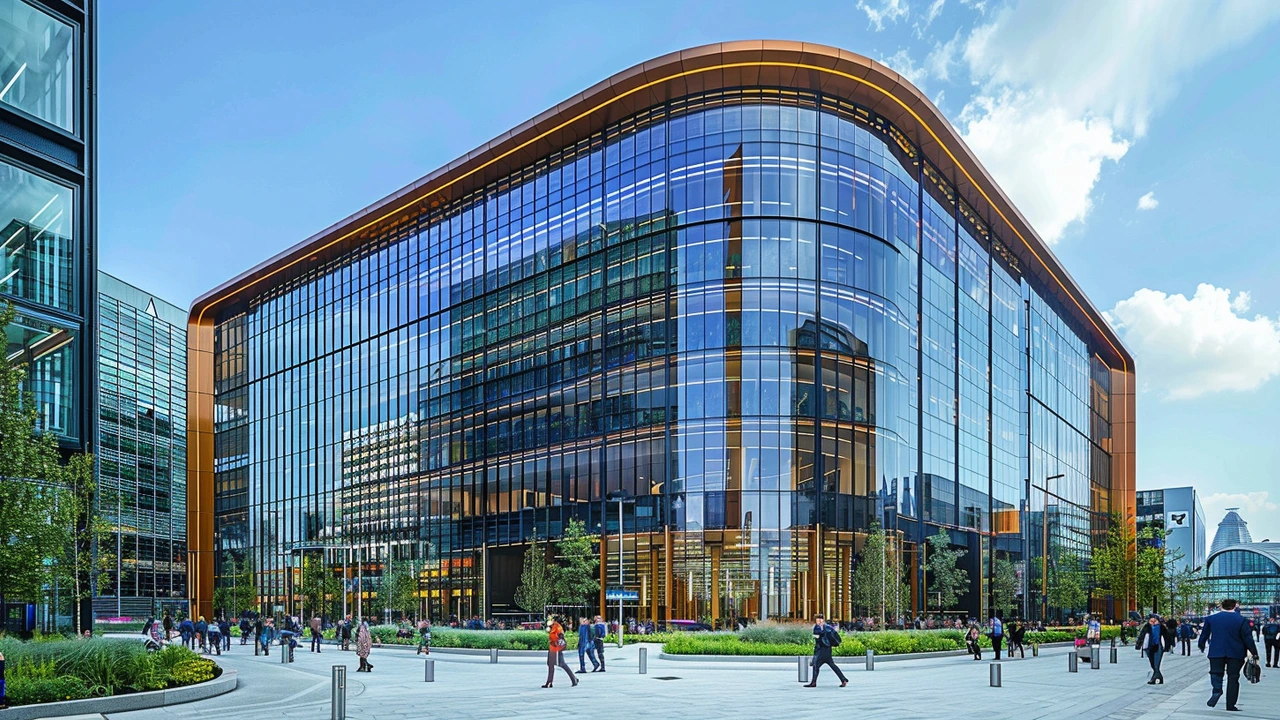
Influence on Urban Planning
Mid-Century Modern design had a profound impact on urban planning, especially in the way cities were organized and how buildings interacted with their surroundings. This design movement revolved around functionality and the integration of nature into urban spaces, fundamentally altering the approach architects and planners took.
One of the key ways Mid-Century Modern influenced urban planning was through the promotion of open spaces and public areas. The intention was to create cities that felt less congested and more connected to nature. This led to the development of parks, pedestrian pathways, and the integration of greenery into urban settings. These changes not only enhanced the aesthetic appeal of cities but also improved the quality of life for residents.
The use of clean lines and minimalistic designs in buildings reduced visual clutter, making urban environments feel more streamlined and harmonious. Architects focused on smooth transitions between indoor and outdoor spaces, utilizing large glass windows and open floor plans to allow natural light to flood interiors. This design choice not only created a sense of spaciousness but also promoted sustainability through the use of passive solar energy.
Incorporating Mid-Century Modern principles, cities like Brasilia, designed by Oscar Niemeyer, showcased how urban planning could merge form with function. Brasilia's layout emphasized symmetry, wide avenues, and modernist structures set amidst open green spaces, offering a blueprint for future urban developments.
Urban planners were also influenced by the social aspects of Mid-Century Modern design. They sought to create inclusive spaces that catered to various community needs. This holistic approach was reflected in the development of multi-functional public areas, combining recreational, commercial, and residential zones in a cohesive manner.
According to architect Ludwig Mies van der Rohe, “Architecture starts when you carefully put two bricks together. There it begins.” This quote underscores the meticulous attention to detail and intentionality that characterized Mid-Century Modern urban planning.
Moreover, the movement’s emphasis on modular and prefabricated construction methods streamlined building processes, making it easier to implement large-scale urban projects quickly and efficiently. Cities like Chandigarh in India, designed by Le Corbusier, exemplified this, with its grid-based layout and uniform building practices.
Today, the principles of Mid-Century Modern design continue to influence urban planners who seek to create sustainable, aesthetically pleasing, and functional urban areas. By studying the successes and innovations of this period, modern cities can learn valuable lessons in balancing form, function, and environmental consciousness.
Case Studies of Iconic Cities
When talking about urban landscapes influenced by Mid-Century Modern design, Palm Springs, California, often stands out as the quintessential example. Initially a desert oasis, Palm Springs became a hub for Mid-Century Modern architecture during the 1950s and 1960s. Legendary architects like Richard Neutra, John Lautner, and Albert Frey left an indelible mark on the cityscape, creating homes and public spaces that seamlessly blend indoor and outdoor environments. The city’s annual Modernism Week festival is a testament to the lasting influence of this architectural style, drawing enthusiasts from around the world to explore preserved homes, take guided tours, and attend lectures.
Another iconic city that showcases the impact of Mid-Century Modern design is Los Angeles. In this sprawling metropolis, you can find numerous public buildings, schools, and commercial structures that embrace the clean lines and functional aesthetics typical of the style. Buildings such as the Eames House in Pacific Palisades and the Stahl House in the Hollywood Hills feature prominently in architectural studies and popular media for their innovative use of space and materials. These buildings were designed to adapt to the Southern California climate, making use of large glass windows to provide natural light and ventilation while offering panoramic views of the surrounding landscape.
Moving eastward, we find the influence of Mid-Century Modern design in cities like New York, where the iconic Lever House stands as a prime example. Completed in 1952 by the architectural firm of Skidmore, Owings & Merrill, Lever House broke new ground as one of the first glass curtain-wall skyscrapers in the United States. Its sleek, minimalist design contrasted sharply with the ornately decorated buildings that dominated the New York skyline at the time, heralding a new era of architectural innovation. This emphasis on functionality and simplicity can also be seen in residential developments like the Usonia Historic District in Westchester County, which features homes designed by Frank Lloyd Wright and his apprentices.
In the Midwest, cities like Chicago have also embraced Mid-Century Modern principles, particularly in their approach to public housing and commercial buildings. The Inland Steel Building, designed by Bruce Graham and Walter Netsch, is an excellent example of this. This building not only boasts a distinctively modern aesthetic but also incorporates innovations like an open office floor plan and centralized service core, which have since become standard in office building design. Chicago’s O'Hare International Airport, with its striking Jet Age terminal design, further exemplifies the city's commitment to blending practicality with modernist beauty.
Finally, the impact of Mid-Century Modern design extends beyond the United States, with cities such as Brasilia in Brazil mirroring these architectural principles on a grand scale. Designed by Oscar Niemeyer and urban planner Lucio Costa, Brasilia was constructed in the 1950s as a planned city meant to symbolize Brazil’s future-forward vision. Employing open spaces, bold geometric forms, and extensive use of glass and concrete, Brasilia's layout and buildings encapsulate the Mid-Century ethos of functionality fused with aesthetic simplicity.

Incorporating Mid-Century Modern in Today's Urban Design
Mid-Century Modern design principles can be seamlessly woven into contemporary urban landscapes, offering a nod to the past while embracing modern needs. One way to achieve this is by focusing on simplicity and functionality. Architects and city planners can start by emphasizing open spaces and minimalistic structures. Using clean lines and geometric shapes helps create a sense of order and clarity, which is much appreciated in today's busy cities. Large windows become a staple, flooding interiors with natural light and establishing a stronger connection to nature.
Another essential aspect of Mid-Century Modern design is the use of materials. During its peak, this style favored natural and locally sourced materials. Wood, stone, and glass were commonly used to create buildings that felt grounded in their environment. Adopting these materials in contemporary projects can add an element of sustainability, responding to today's increasing call for environmentally conscious designs.
Mid-Century Modern's focus on integration with nature is another principle that can be effectively utilized. Incorporating green spaces, rooftop gardens, and indoor plants within the urban fabric can significantly enhance the quality of life for city dwellers. These elements not only offer a visual break but also improve air quality and provide settings for social interaction and relaxation.
The flexibility of this style also allows it to be adapted to various types of spaces. Whether it's a residential block, a commercial hub, or a public park, Mid-Century Modern design can be tweaked to suit different needs while maintaining its core principles. This versatility is one reason why it remains relevant even decades after its inception.
Public buildings, in particular, can benefit greatly from Mid-Century Modern design. Libraries, schools, and community centers can incorporate the style's emphasis on open, communal spaces, which encourage social engagement and inclusivity. The use of functional furniture that is both stylish and ergonomic can make these public spaces more inviting and user-friendly.
For those looking to introduce Mid-Century Modern elements into urban design, it can be helpful to look at successful examples from the past. Cities like Palm Springs and Los Angeles offer numerous case studies. One can observe how these cities balance historical preservation with modern-day needs, ensuring that the integrity of the original design is maintained while making necessary updates.
Another tip is to engage with the community during the planning stages. Mid-Century Modern design often revolved around the idea of creating spaces that catered to people's needs. By involving local residents in the planning process, architects and city planners can ensure that the end result is not only aesthetically pleasing but also functional and responsive to contemporary lifestyles.
Incorporating technological advancements can also create a bridge between mid-century aesthetics and modern convenience. Smart home technologies and energy-efficient systems can be integrated into buildings without compromising their design integrity. This could include installing solar panels, using energy-efficient appliances, or integrating smart lighting systems.
“Good design is a renaissance attitude that combines technology, cognitive science, human need, and beauty to produce something,” said Paola Antonelli, Senior Curator of Architecture and Design at the Museum of Modern Art (MoMA). This approach can guide today's architects in merging Mid-Century Modern principles with current urban requirements.

